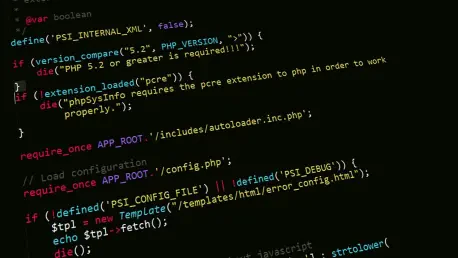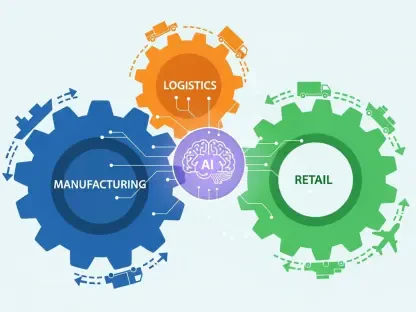In a world where artificial intelligence drives critical decisions across industries, consider a scenario where a major financial institution’s AI model fails mid-transaction due to outdated data, costing millions in lost trust and revenue. This isn’t just a hypothetical risk—it’s a pressing reality for organizations scaling AI systems in 2025. Deploying machine learning models at scale remains a formidable challenge, often plagued by unpredictable outcomes and complex dependencies. The intersection of DevOps and AI, commonly known as MLOps, offers a lifeline, promising streamlined pipelines that can keep pace with relentless innovation.
The stakes of mastering AI deployment have never been higher. As businesses rely on machine learning for everything from personalized customer experiences to life-saving medical diagnostics, a single misstep can erode confidence or violate regulations. This narrative dives into why blending DevOps principles with AI is no longer a luxury but a necessity, exploring the unique hurdles of ML deployment and offering a roadmap for building robust, scalable pipelines that deliver results without compromising reliability.
Why ML Deployment Pipelines Are So Hard to Tackle
Deploying machine learning models isn’t a straightforward task like rolling out a web application. Traditional software operates on predictable logic—code passes tests, and it works as expected. In contrast, AI models rely on dynamic data inputs that can shift over time, leading to unexpected behaviors. A retail giant, for instance, might see its recommendation engine falter when consumer trends evolve beyond the training data, resulting in lost sales opportunities.
Beyond data volatility, the intricacies of managing ML systems add layers of difficulty. Teams must juggle model versioning, long training cycles that can span days, and the need for specialized hardware like GPUs for efficient processing. These elements slow down deployment cycles and demand a level of precision that standard software pipelines rarely require, pushing organizations to rethink their approach entirely.
The ripple effects of poor deployment practices are costly. A flawed model in production can skew predictions, as seen when a fintech company’s outdated credit scoring system wrongly denied loans to qualified applicants. Such incidents highlight the urgent need for tailored strategies that address AI’s unique demands, ensuring systems remain accurate and trustworthy at scale.
The Critical Importance of AI Deployment Today
Across sectors like healthcare, finance, and logistics, AI has become the backbone of innovation, powering tools that diagnose diseases, detect fraud, and optimize supply chains. Yet, the pressure to deploy these models rapidly often clashes with the need for precision. A single erroneous prediction in a medical AI tool could misdiagnose a patient, while a biased financial model might unfairly impact marginalized communities, drawing regulatory scrutiny.
This high-stakes environment underscores the value of MLOps, a discipline that merges DevOps’ focus on speed and collaboration with AI’s need for rigorous oversight. With global AI spending projected to reach $500 billion by 2027, according to industry forecasts, businesses can’t afford deployment failures that jeopardize trust or compliance. MLOps provides the framework to balance agility with accountability, addressing ethical concerns alongside technical demands.
Moreover, as regulations tighten—think GDPR or emerging AI-specific laws—organizations face growing demands for transparency and fairness in their models. A healthcare tech leader recently noted that deployment isn’t just about performance; it’s about proving that systems adhere to strict standards. This dual focus on innovation and responsibility makes mastering AI pipelines an urgent priority for any forward-thinking enterprise.
Key Differences Between AI and Traditional Software Deployment
Unlike conventional software updates, which follow a linear path of coding, testing, and release, AI deployment resembles a complex puzzle with moving pieces. Data drift stands as a primary obstacle, where real-world inputs no longer align with training datasets, causing performance to plummet. A logistics firm, for example, might find its delivery optimization model failing when traffic patterns shift unexpectedly due to seasonal changes.
Additional challenges compound the issue. Model versioning requires tracking not only code but also the specific data and algorithms used, a far cry from standard software updates. Training delays stretch timelines, while hardware needs for intensive computation add cost and complexity. Monitoring, too, extends beyond system uptime to include metrics like prediction accuracy and bias, demanding broader vigilance than traditional DevOps tools typically offer.
These distinctions necessitate a tailored approach. Consider a bank struggling to update its fraud detection model—delays in retraining led to undetected scams, costing significant losses. Such cases reveal that standard deployment practices fall short for AI, requiring pipelines built with automation, adaptability, and continuous feedback to handle the unpredictable nature of machine learning systems effectively.
Merging DevOps with AI: Lessons from Industry Experts
Adopting DevOps principles for AI isn’t merely a technical adjustment; it’s a paradigm shift in how teams operate. A senior data scientist at a leading e-commerce platform emphasized, “Building ML pipelines requires breaking silos—data scientists and operations must align on shared goals.” This cultural integration, paired with automation and observability, forms the bedrock of MLOps, adapting DevOps’ rapid feedback loops to address AI-specific needs.
Real-world applications illustrate this synergy. A global retailer tackled data drift by automating model retraining within its pipeline, ensuring product recommendations stayed relevant as customer preferences evolved. Such automation, a cornerstone of DevOps, cuts manual errors and accelerates updates, while observability tools monitor for performance dips in real time, offering insights traditional systems can’t match.
Industry insights also point to collaboration as a linchpin. When engineers, data experts, and operations teams work in tandem, deployment cycles shrink, and risks diminish. A case in point is a financial services firm that reduced deployment errors by 40% after integrating cross-functional workflows. These examples underscore how MLOps builds on DevOps to create resilient pipelines tailored for the nuances of machine learning.
A Blueprint for Scalable ML Deployment Pipelines
Constructing a continuous deployment pipeline for machine learning demands a structured yet flexible framework to handle its inherent complexities. Start with data ingestion and validation—ensuring data quality and compliance is non-negotiable. In healthcare, for instance, anonymizing patient records before model training prevents privacy breaches while maintaining data integrity for accurate predictions.
Next, focus on model training and versioning, paired with automated testing to catch issues like bias or inaccuracy early. Deployment should roll through staging environments before hitting production, leveraging tools like Kubernetes for seamless orchestration. A fintech company demonstrated this by maintaining strict version histories, ensuring every credit model update was traceable and reversible if flaws emerged. Monitoring and feedback loops complete the cycle, triggering retraining when data drift is detected, thus keeping models relevant over time.
Best practices amplify this framework’s impact. Versioning every component—code, data, and models—ensures clarity, while testing for fairness alongside accuracy mitigates ethical risks. Automating retraining and integrating real-time metrics transform pipelines into adaptive systems capable of scaling with demand. This approach minimizes downtime and safeguards performance in high-stakes sectors, offering a practical path to reliable AI deployment.
Reflecting on the Journey of AI Deployment
Looking back, the evolution of AI deployment through MLOps marked a turning point for industries reliant on machine learning. The fusion of DevOps principles with AI’s unique demands addressed critical gaps, from data drift to regulatory compliance, enabling organizations to deploy models with confidence. Each lesson learned, from automation’s power to the necessity of cross-team collaboration, shaped a more resilient approach to scaling technology.
As challenges persisted, the focus shifted toward actionable strategies for sustained success. Prioritizing robust monitoring systems ensured early detection of model degradation, while investing in scalable infrastructure prepared pipelines for future growth. These steps, rooted in real-world outcomes, offered a clear direction for navigating AI’s complexities.
Ultimately, the path forward rested on continuous adaptation. Embracing emerging tools and fostering a culture of shared responsibility between technical and ethical considerations became essential. By building on past insights, businesses positioned themselves to innovate without sacrificing trust, ensuring that AI’s potential was harnessed responsibly and effectively.









